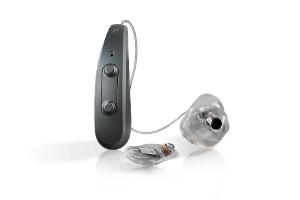MENLO PARK, Calif., December 22, 2021 /PRNewswire/ -- A new three-part series discussing clinical evidence amassed over the course of ten years of research on the Earlens bandwidth advantage has just kicked off in the popular industry journal Hearing Review.
This series, which includes articles in the current December and upcoming January and February issues, provides a high-level review of data accumulated from over a decade of rigorous clinical research with the remarkable technology at the heart of the Earlens system. The peer-reviewed studies detailed in the series confirm that Earlens delivers an extended bandwidth of audible sound over the range from 100Hz to 10kHz and support the hypothesis that the broader range of sound offers clinically meaningful benefits for patients. Findings include:
- Better speech recognition – A 25% improvement in speech recognition, such as the ability to recognize “s” sounds in plural words, and to more accurately differentiate key consonants such as /s/ from /f/, /p/ from /b/
- Better speech understanding in noise – a clear and meaningful advantage in situations with louder background noise
- mproved sound quality – with patients reporting superior naturalness of sound, and patient preference for the Earlens extended bandwidth.
Part 1 of the series, “Research on speech-in-noise and the pursuit of hearing care’s “Holy Grail”, is now available and dives into how increasing the bandwidth of processed audibility results in significant improvements in speech understanding performance as evidenced through studies like one conducted by the world-renowned research team at the National Centre for Audiology at Western University in Ontario, Canada. Part 2, The “Magic” of Direct Drive: Sound Quality and Preference Evidence from the Earlens Device will be published in January 2022, and will summarize the mounting evidence in favor of the Earlens device. Finally, Part 3, “Adding it up: Audibility, Sound Quality, Performance and Implications for Brain Health” will dive deep into the clinical and experimental evidence for the benefit of broadband restoration of audibility from 100Hz to 10KHz, and how the Earlens approach to overall audibility improvement is reliably achieved in Earlens fittings via direct drive.
Dr. Drew Dundas, a co-author of the paper said: "The data collected over the past 10+ years speaks for itself and reinforces the importance of making a broad bandwidth of frequencies, audible for people with hearing impairment. The audibility that can be achieved with direct drive provides meaningful benefits in the situations where patients consistently seek improvements - better hearing in challenging environments and more natural sound quality. Real ear measurements show that the speaker in traditional acoustic devices is limited in the ability to provide audible, processed benefits to patients beyond a narrow range of sound frequencies. It’s a physics limitation of the technology. That is why Earlens is such a game-changing technology. By directly vibrating the eardrum, Earlens accomplishes what traditional hearing aids are not able to.”
For more information, view the December issue of Hearing Review, available now.

About Earlens
Earlens is a privately held medical technology company committed to transforming the hearing experience for millions of people who suffer from hearing loss.
The company has developed the Earlens® Contact Hearing Solution, which was named a TIME Top 100 Invention of 2020. The Earlens system directly activates the hearing system, delivering the broadest bandwidth available today and superior sound quality. This revolutionary, nonsurgical hearing solution uses a small lens to vibrate the eardrum, replicating the natural hearing process. The Earlens® Contact Hearing Solution received FDA clearance in 2019 for a second generation of the Earlens technology.
For more information, please visit www.earlens.com/providers/become-a-provider/
*Folkeard et al. "Detection, Speech Recognition, Loudness, and Preference Outcomes With a Direct Drive Hearing Aid: Effects of Bandwidth." Trends in Hearing, April 19, 2021.
